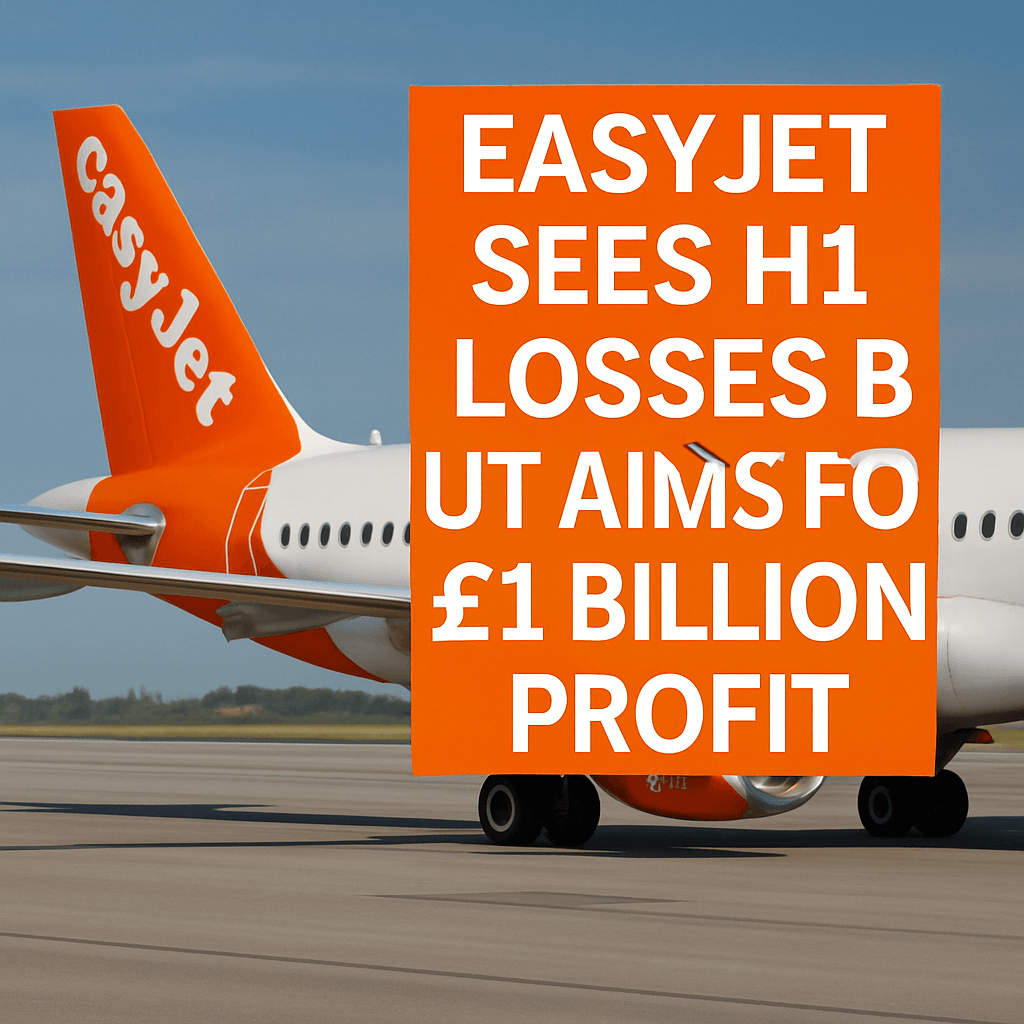EasyJet Sees H1 Losses but Aims for £1 Billion Profit

Half-Year Financial Results
Low-cost carrier EasyJet announced on Thursday that its headline pre-tax loss for the six months to 31 March 2025 widened to £394 million (€467.3 million), up from £350 million (€415.1 million) in H1 2024. Despite the deeper loss, group revenue rose 8% to £3.53 billion (€4.2 billion), driven by increased capacity and passenger volumes.
- Revenue: £3.53 billion, +8% year-on-year
- Headline pre-tax loss: £394 million, vs. £350 million a year earlier
- Seat capacity: +6%
- Passengers carried: +8%
- Impact of Easter timing: –£50 million
- Fuel cost rise and increased investment: negative margin effects
Revenue Growth Drivers
The carrier’s revenue uplift was underpinned by strong winter bookings and favourable load factors of 92%. Average fare per passenger was held at £71.20, broadly in line with year-ago levels despite upward pressure from higher jet-fuel prices, which averaged $86 per barrel Brent over the period.
Fleet Renewal and Fuel Efficiency
EasyJet continues to modernise its fleet with Airbus A320neo aircraft. These next-generation narrowbodies provide a:
- 15% reduction in fuel burn per seat
- 12% lower CO₂ emissions compared to previous A320ceo models
- Enhanced range of up to 3,500 km, opening new medium-haul routes
Management expects the full-year benefit from operating 14 additional A320neo jets to exceed £30 million in fuel savings.
EasyJet Holidays and Partnership Expansion
EasyJet’s tour operator arm delivered a profit of £44 million (€52.2 million), up £13 million year-on-year, accounting for over 10% of group revenue. The recent partnership with Tesco Clubcard grants access to 23 million households and underpins a forecast 25% growth in holiday passengers through September 2025.
Market Reaction and Share Performance
Shares fell as much as 6% in early London trade, before recovering slightly to close around 3% below the prior day’s level. Over the past 12 months, EasyJet stock has gained 21%, outpacing the FTSE 100’s 4.5% rise.
“Despite our typical winter loss, the progress in bookings and cost efficiencies gives us confidence in sustainable profitability growth,” said Kenton Jarvis, CEO of EasyJet.
Risk Factors and Hedging Strategies
EasyJet hedges approximately 70% of its jet-fuel exposure for the next 12 months using a combination of forwards and swaps, with an average hedge price of $75 per barrel. However, a sharp rise in oil beyond this level could erode margins. Additional operational risks include:
- Air traffic control delays, particularly in Southern Europe
- Currency fluctuations versus the euro, which generates 60% of revenues
- LABOUR-related disruptions in the UK and across Continental bases
Outlook and Guidance
EasyJet reaffirmed its medium-term goal of generating over £1 billion in annual profit before tax, supported by:
- Summer 2025 bookings at 80% sold for Q3 and 42% for Q4
- Continuous fleet renewal with A320neo and potential A321LR introduction
- Expansion into underserved secondary airports in Italy and Spain
“We remain on track for another record summer, with strong earnings growth ahead,” Jarvis added.